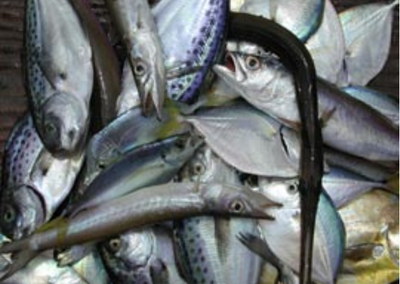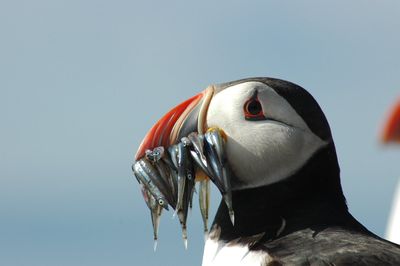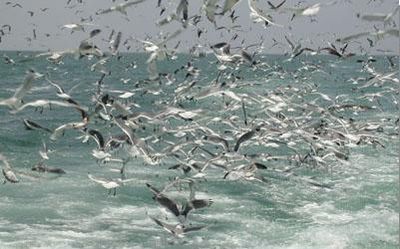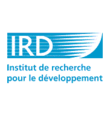Ecosystem approach to marine resources (EAMR)
Contents
Background
After decades focusing on the study and management of single species, fisheries management is evolving towards ecosystem based approaches. These regard the ecosystem as the most relevant unit, emphasising that resilient ecosystems are crucial to maintain the sustainability of marine goods and services. The FAO Reykjavik declaration of 2001, reinforced at the World Summit on Sustainable Development in Johannesburg in 2002, requires nations to use an ecosystem approach to develop policy governing the exploitation of marine resources by year 2010. Nations are further required to restore depleted fish stocks by 2015, and to establish representative networks of Marine Protected Areas by 2012.
To fulfil these requirements, a strategy based on innovative and integrated science is needed to address the complexity of marine ecosystems and to propose operational management frameworks. The Ecosystem Approach to Marine Resources is such a strategy.
EAMR must be built on a scientific rationale that links ecological processes to ecosystem-level patterns using models. The outputs of these models will be indicators of the state of the ecosystem, and will help managers to protect the integrity of the ecosystem without crossing ecological limits. This will support the maintenance of viable fisheries policies.
Ecosystem approach to marine resources:
moving from ‘fisheries oceanography’ towards ‘ecosystem oceanography’

The scientific objectives of the Ecosystem Approach to Marine Resources (EAMR) are to identify, quantify and model the major ecological mechanisms that control exploited populations, their responses to climate and anthropogenic forcing, and their role in the ecosystem. The EAMR must consider ecosystem knowledge and uncertainties to facilitate a move towards ecosystem oceanography. Ecosystem oceanography takes a holistic view, integrating food-web dynamics with environmental and anthropogenic forcing to understand and predict changes in marine ecosystems. Implementation of the EAMR would also help in balancing diverse societal objectives.
Under a context of climate change and overexploitation the EAMR aims to answer specific questions about the functioning of marine ecosystems:
- Under which circumstances does the removal of top predators result in fundamental changes at lower trophic levels?
- Under which circumstances does the heavy exploitation of forage species, such as anchovies, herring or sardines, cause fundamental changes in the functioning of marine ecosystems?
- What are the combined effects of climate change and heavy exploitation on marine resources and how reversible are these effects?
The key to answering these questions and exploring whether general principles can be applied lies in understanding the energy flow within a specific ecosystem, through three emerging questions:
- Can we quantify and model the interactions between all the relevant ecosystem components so that abrupt patterns (e.g. ecosystem state changes) can be predicted?
- What drives marine ecosystem dynamics – the ocean climate, exploitation patterns, species interactions or the combined effect of the three?
- How can ecosystem oceanography contribute to the development of EAMR approaches that balance different societal objectives?
Managing marine ecosystems through the EAMR
How can we move from a ‘fisheries’ to an ‘ecosystem’ perspective?
1. Develop robust modelling approaches that integrate ecological processes in both predictive and retrospective mode and account for process uncertainties.
2. Develop implementation strategies that balance exploitation and conservation needs according to flexible societal objectives.
3. Understand how biodiversity changes affect the dynamics of marine ecosystem controls.
Understanding the structure of controls in a given ecosystem is vital to answering important ecological questions and to the implementation of the EAMR. For example, it has been shown that fisheries management decisions on sardine populations off South Africa influence the success of sea bird populations. Generalisations regarding the structure of controls must also be provided so that the impacts of global forces on diverse ecosystems can be investigated. The integration of our disparate scientific knowledge (environmental, ecological, biological and socio-economic) through holistic models and synthetic indicators is a prerequisite for the development of ‘an ecology of marine ecosystems’, a move central to the EAMR. Exploratory models are required to investigate under which circumstances climatic, ecological or exploitation changes substantially impact marine ecosystems, the consequences of these impacts and their reversibility.
Integrated, comparative approaches between the different and highly diverse marine ecosystems encompassed within EUR-OCEANS will help to promote a unified and shared vision of what can and should be achieved under the internationally expected development of the EAMR. The ultimate management goal would be to ensure that in the face of ‘global changes’ (e.g. climate change, exploitation patterns) ecosystem states that ensure the sustainability of goods and services and broad ecosystem resilience are maintained.
Action points
- A scientific framework will be developed, through the production of a vision paper, to promote integration and coordinated studies throughout EUR-OCEANS in support of the EAMR.
- The necessary scientific expertise for the implementation of generic EAMR frameworks will be developed - for example through the development of dashboards, models and indicators.
- Ecosystem-specific EAMR frameworks need to be developed which emphasise the role played by science and demonstrate that management strategies can be built worldwide to regain volume and lost markets for marine resources (for examples of EAMR application see upcoming EUROCEANS Fact Sheets on the southern Benguela and other systems).
See also
FAO - The ecosystem approach to fisheries management
Convention on Biological Diversity - Ecosystem Approach
|
Fact Sheet by: EUR-OCEANS Knowledge Transfer Unit, hosted by the GLOBEC IPO at Plymouth Marine Laboratory. For further information contact, Jessica Heard: jessh@pml.ac.uk or visit the Website: www.eur-oceans.org/KTU



